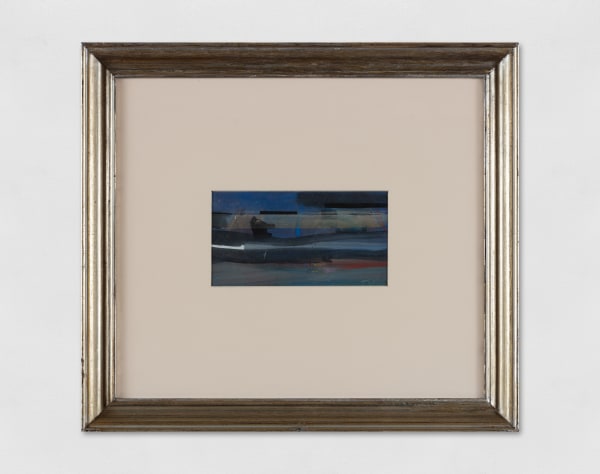-
Biography
Alberto Burri (Città di Castello, Perugia, Italy, 1915 – Nice, France, 1995)
The artist was born in Città di Castello, in the area of Perugia, Italy, in 1915. He graduated in Medicine in 1940.
He served as a medical officer in Tunisia during World War II. In 1943, he was captured by the British soldiers and sent to a concentration camp in Hereford, Texas.
During this period, he decided to shift from medicine to painting. Upon his return to Italy in 1946, he settled in Rome and devoted his life entirely to painting.
His first solo exhibitions held in the city, in 1947 and 1948, featured figurative works deeply influenced by the Roman School of the 1930s.
In May 1948, together with Bianchi and Catrami, Burri presented, for the first time, abstract works drawing inspiration from artists like Paul Klee and Joan Miró.
His pieces were characterised by a variety of forms ranging from amoebic and organic shapes to threadlike and reticular patterns.
Burri experimented with oil, tar, sand, glue, and pumice stone, as well as other materials applied to canvas. In doing so, he drifts away from the compositional and formal conventions that were usually adopted.
In 1950, he began his series "The Moulds and the Hunchbacks”. He started introducing in his work worn materials employed for his well-known "Sacks": the first of this series was crafted entirely from patched and sewn jute.
During this period, he experimented with moulds and concentrated on his first hunchback whose characteristic bulge was obtained using wooden branches placed behind the canvas.
Later, J.J. Sweeney played a pivotal role in helping Burri showcasing his pieces at the Guggenheim Museum in New York as early as 1953, in the exhibition "Younger European Painters".
Throughout the 1950s and 1960s, Burri's solo exhibitions, encompassing different works of art, were displayed in cities like Rome, Houston, Minneapolis, Darmstadt, Rotterdam, Turin, and Paris, garnering significant critical acclaim.
The quality and inventiveness of the patterns used are especially admired. Far from being simplistic, his masterpieces are crafted with cutting-edge techniques seamlessly integrated into the painting. The graphic elements do not merely accompany but rather, they blend extreme precision with unparalleled expressive clarity.In 1978, the Fondazione Palazzo Albizzini Collezione Burri was established in Città di Castello to promote, manage, and showcase his work.
In 1981, the first set of his artworks was displayed in the museum. Eventually, in 1989, the Foundation acquired the Ex Seccatoi del Tabacco complex in the same town.
From 1991 to 1993, Burri produced his final major cycles, "Metamorfotex" and "Black and Gold", before dying in 1995.
In 1994, he received acclaim for donating his painting “White Black” (dated 1969) and three set of graphics (dated 1993-94) to the Uffizi Gallery in Florence.
Alberto Burri died in Nice in 1995.
Copyright the artist. Photo UniCredit Group (Sebastiano Pellion di Persano)
-
Works
Alberto Burri: Italian, 1915-1995
Alberto Burri stands as one of the most significant artists of the 20th century, renowned as a leading figure in the Informale Materico movement, known for using unconventional materials. He is considered a precursor of the Arte Povera.Join our mailing list
* denotes required fields
In order to respond to your enquiry, we will process the personal data you have supplied in accordance with our privacy policy.



